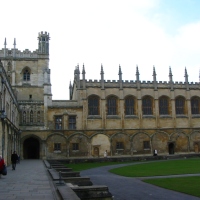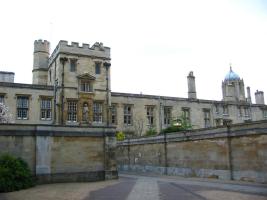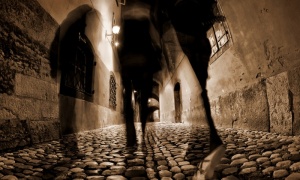Tradition has it that the first Christian heretic was Simon of Gitta in Samaria, known to most as Simon Magus or Simon the Sorcerer. He appears only once in the canon of Scripture, in Acts 8:9:24, where he is said to be a sorcerer who hears the Gospel and repents, only to beg Deacon Philip the Evangelist to sell him the power to heal and to perform miracles. The Blessed Saint rebukes him and Simon asks that he pray for his soul. However, Simon, we are told elsewhere, did not repent of his error. His not inconsiderable knowledge of the occult warped his understanding and he created a Gnostic heresy. Surviving traditions about Simon appear in anti-heretical texts, such as those of Irenaeus, Justin Martyr, Hippolytus, and Epiphanius, where he is often regarded as the source of all heresies. The sin of simony, or paying for position and influence in the church, is named for Simon. The Apostolic Constitutions also accuse him of lawlessness. According to the early church heresiologists Simon is also supposed to have written several lost treatises, two of which bear the titles The Four Quarters of the World and The Sermons of the Refuter. In apocryphal works including the Acts of Peter, Pseudo-Clementines, and the Epistle of the Apostles, Simon also appears as a formidable sorcerer with the ability to levitate and fly at will. All of this inevitably leads to the question: who was the real Simon of Gitta? The truth is perhaps stranger than any legend.
The different sources for information on Simon contain quite contrasting pictures of him, so much so that it has been questioned whether they all refer to the same person. Assuming all references are to the same person, however, the earliest reference to him is the canonical Acts of the Apostles, which tell of a person named Simon practicing magic in the city of Sebaste in Samaria, meeting with Philip the Evangelist, and then trying to offer money to the Apostles in exchange for miraculous abilities, specifically the power of laying on of hands. In Acts 8:20, Peter denounces Simon’s attitude, and declares, “May your money perish with you!”. Justin Martyr and Irenaeus tell how Simon claimed that the first Thought of God created the angels. The angels rebelled and imprisoned the first Thought in the body of a woman, who in the day of Simon, was incarnated as a slave girl named Helene. Simon bought and freed Helene, claiming that he was the True Son of God and that he and Helene were destined to save the world together. He was said to have extraordinary powers, including the ability to fly, free himself from bindings, control wind and fire, and create homunculi from the air. Simon claimed that he was the pupil and then teacher of Dositheus, who led those members of the sect of John the Baptist who had not left to follow Christ, and hence claimed that he was the true inheritor of John the Baptist.
The final confrontation between Simon Magus and Peter happens, according to the apocryphal Acts of Peter, in the Roman forum. Simon flies and preaches at the awed masses from above. Peter sinks to his knees and prays; Simon falls to earth; the mob, enraged, tears him to pieces. The church of Santa Francesca Romana stands on the spot where Simon is reputed to have fallen; the stones supposedly bear the imprint of the Apostle’s knees. Simon’s Gnostic sect continued without him for a while before disappearing. However, this is far from the last time that we hear of Simon in world history, literature and folklore. In Irish mythology, for example, Mug Ruith is said to have been a student of Simon Magus, who taught him his magic skills and helped him build the flying machine roth rámach. In Canto XIX of The Divine Comedy by Dante Alighieri, Simon is in the third ditch of the eighth circle of the Inferno (Hell). Simon and Helene appear in Christus: A Mystery and Helen of Tyre by Henry Wadsworth Longfellow. Many aspects of the life of Simon Magus are echoed in the later Faust legend of Christopher Marlowe and Johann Wolfgang von Goethe. He was even a villain in an early issue of DC Comics’ original Justice League of America comic book series!
But Simon has not always been cast in the role of a villain. There is a single 9th century text – a cycle of stories and poems presenting Simon Magus as some kind of hero, a man who uses his magic to defeat demonic creatures. One poem, which dates from just before the fall of the Western Roman Empire, tells of Simon’s struggles against ‘The Name That Must Not Be Written’, an inchoate demon of darkness, which for some reason hides within the Catholic Church. This is presumably an allegory for the corruption Simon’s allegedly pure Gnostic descendants saw in the Church at the time. In another story, Simon is pursued by the ‘Seven Daughters of the Nibiru’, whom he eludes through the use of cunning and magic. The Simon Romance, as the collection has been called on the very few occasions when it has been referenced as a whole, is in part very difficult to translate and read thanks to its esoteric terminology, and the fact that it was written in Greek by someone for whom Greek was clearly not a first language. The most interesting thing about The Simon Romance, however, is that in it Simon does not die. He joins Helene in alchemical magic, with the aid of a priest of pagan Thoth-Hermes (a ‘Thrice-Great’ magician, as the text has it); together they form a perfect Rebis, a creature male and female, at peace with the two halves of its form. The Rebis then ascends into ‘the higher emanations’. It is somewhat difficult to know what to make of this secret romance. The information seems locked within layers of allegory and jargon, and without the key to understanding the work’s esoterica, it is nothing more than a cycle of tall tales. The real Simon, one suspects, will forever remain a mystery.

















“The real Simon, one suspects, will forever remain a mystery.” Actually I am just finishing a novel The Acts of Simon Magus about this fascinating character, combining the “tall tales” with a serious examination of the social and religious environment that produced Christianity. See my draft Indiegogo page at http://simonmagus.com/indiegogo Comments welcome!
I have competed this at https://www.amazon.com/gp/product/B01CYUMNIK/ But what is your source for the Simon Romance? I can’t seem to find it?
There is a truly vast, almost intimidating range of sources in relation to Simon Magus (far more than I could ever list here) but for anyone who is interested I have referred to a few below to get you started – good luck going down the rabbit hole!
David R. Cartlidge, The Fall and Rise of Simon Magus, Bible Review, Vol 21, No. 4, Fall 2005, Pages 24–36.
Francis Legge, Forerunners and Rivals of Christianity, From 330 B.C. to 330 A.D. (1914), reprinted in two volumes bound as one, University Books New York, 1964. LC Catalog 64-24125.
G. R. S. Mead, Simon Magus
Ported, J.R., The Lost Bible
Detering, H., The Falsified Paul (1995/2003)